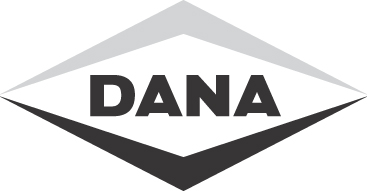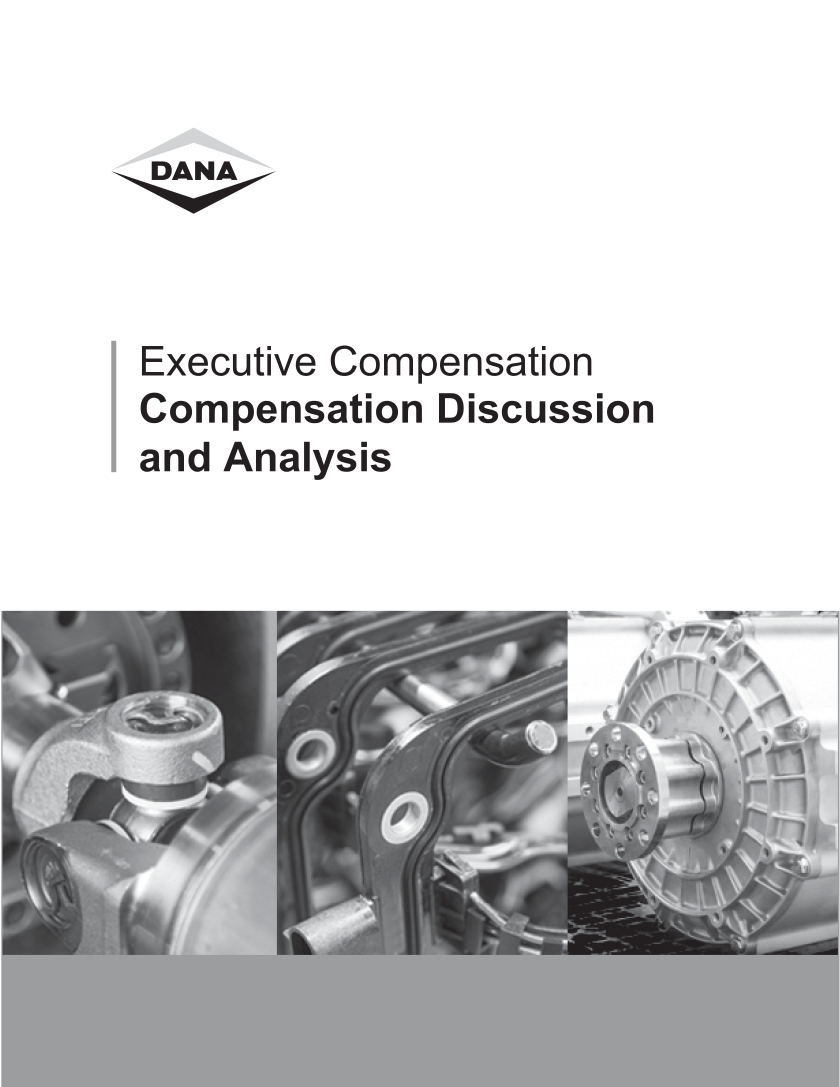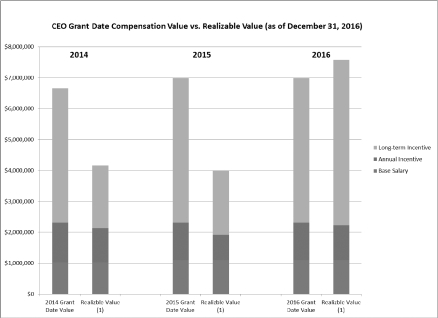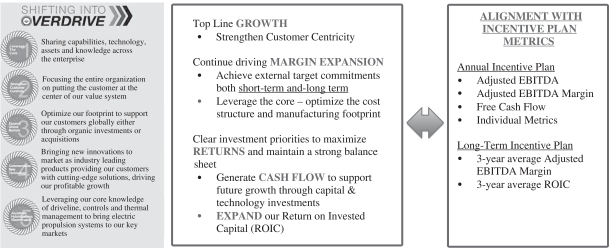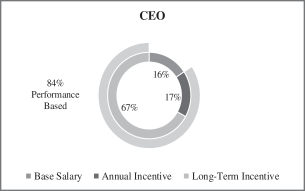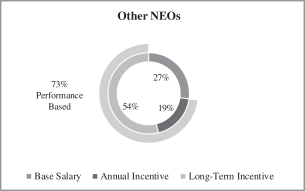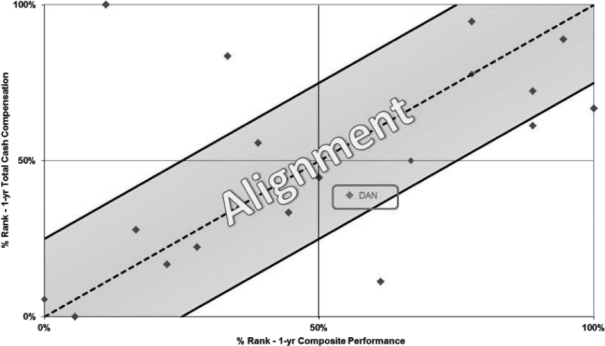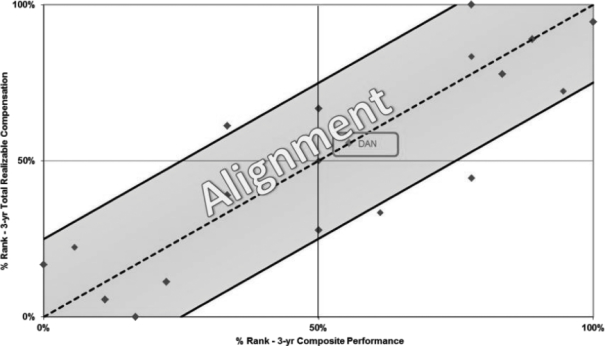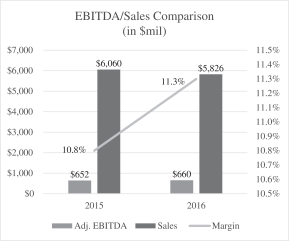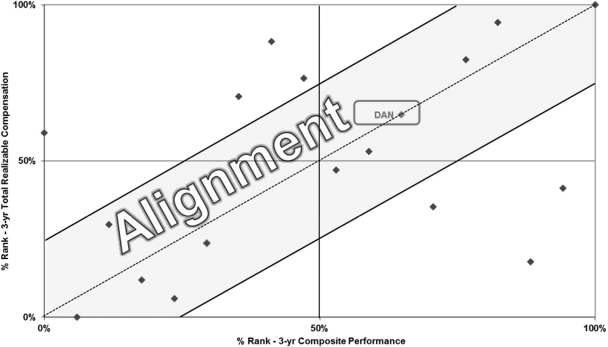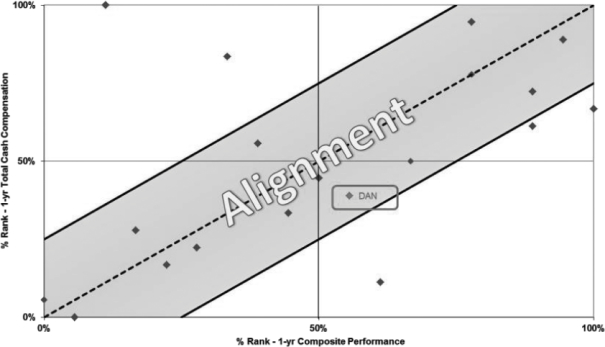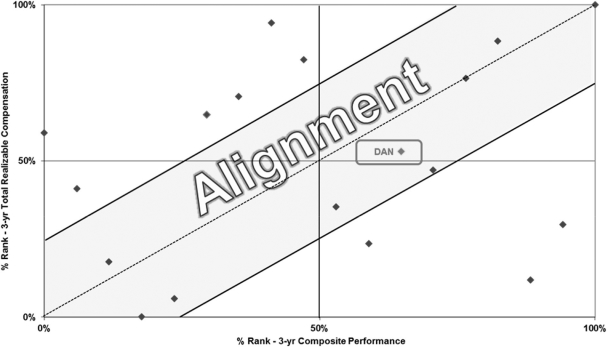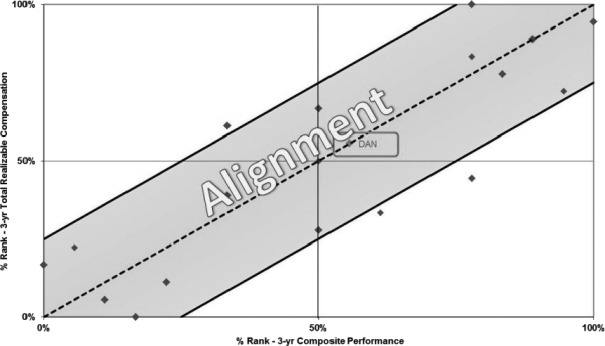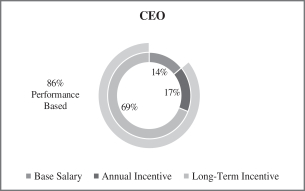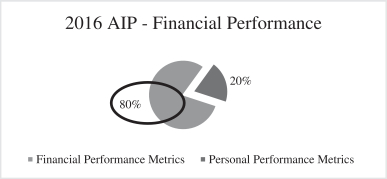| | | | | | |
| | | | | Pages | | |
1.
| | PURPOSE
| | | A-1 | |
2.
| | DEFINITIONS
| | | A-1 | |
3.
| | SHARES SUBJECT TO THIS PLAN
| | | A-6 | |
4.
| | OPTION RIGHTS
| | | A-7 | |
5.
| | APPRECIATION RIGHTS
| | | A-8 | |
6.
| | RESTRICTED STOCK
| | | A-10 | |
7.
| | RESTRICTED STOCK UNITS
| | | A-11 | |
8.
| | PERFORMANCE SHARES AND PERFORMANCE UNITS
| | | A-11 | |
9.
| | OTHER AWARDS
| | | A-12 | |
10.
| | AWARDS TO NON-EMPLOYEE DIRECTORS
| | | A-13 | |
11.
| | MINIMUM VESTING PERIOD
| | | A-13 | |
12.
| | ADMINISTRATION OF THE PLAN
| | | A-13 | |
13.
| | ADJUSTMENTS
| | | A-14 | |
14.
| | CHANGE IN CONTROL
| | | A-14 | |
15.
| | NON-U.S. PARTICIPANTS
| | | A-15 | |
16.
| | TRANSFERABILITY
| | | A-16 | |
17.
| | WITHHOLDING TAXES
| | | A-16 | |
18.
| | COMPLIANCE WITH SECTION 409A OF THE CODE
| | | A-16 | |
19.
| | EFFECTIVE DATE AND TERM OF PLAN
| | | A-16 | |
20.
| | AMENDMENTS AND TERMINATION
| | | A-17 | |
21.
| | SUBSTITUTE AWARDS FOR AWARDS GRANTED BY OTHER ENTITIES
| | | A-17 | |
22.
| | DIVIDENDS AND DIVIDEND EQUIVALENTS
| | | A-17 | |
23.
| | GOVERNING LAW
| | | A-17 | |
24.
| | MISCELLANEOUS PROVISIONS
| | | A-17 | |
DANA INCORPORATED
2017 OMNIBUS INCENTIVE PLAN
1.Purpose. The purpose of this 2017 Omnibus Incentive Plan is to attract and retain directors, officers, other employees and consultants of Dana Incorporated and its Subsidiaries and to motivate and provide to such persons incentives and rewards for superior performance.
2.Definitions. As used in this Plan:
(a) “Affiliate” means a Person that directly, or indirectly through one or more intermediaries, controls, or is controlled by, or is under common control with, the Person specified (provided that an entity shall be deemed an Affiliate of the Corporation for purposes of this Plan only for such periods as the requisite ownership or control relationship is maintained).
(b) “Appreciation Right” means a right granted pursuant toSection 5 of the Plan and will include both Free-Standing Appreciation Rights and Tandem Appreciation Rights.
(c) “Authorized Officer” has the meaning specified inSection 12(d) of the Plan.
(d) “Award” means a grant of Option Rights, Appreciation Rights, Performance Shares or Performance Units, or a grant of Restricted Stock, Restricted Stock Units or Other Awards.
(e) “Base Price” means the price to be used as the basis for determining the Spread upon the exercise of a Free-Standing Appreciation Right or a Tandem Appreciation Right.
(f) “Board” means the Board of Directors of the Corporation and, to the extent of any delegation by the Board to a committee (or subcommittee thereof) pursuant toSection 12 of the Plan, such committee (or subcommittee).
(g) “Cause” shall have the meaning assigned such term in the employment agreement, if any, between a Participant and an Employer and, in the absence of such an agreement, the meaning specified in the applicable Evidence of Award.
(h) For purposes of the Plan, except as may be otherwise provided in an Evidence of Award, a “Change in Control” shall be deemed to have occurred upon the happening of any of the following events:
(i) any Person is or becomes (other than in connection with a transaction described in clause (A) or (B) of Paragraph (iii) below) the beneficial owner (within the meaning of Rule13d-3 of the Securities and Exchange Commission promulgated under the Exchange Act), directly or indirectly, of securities of the Corporation (not including in the securities beneficially owned by such Person any securities acquired directly from the Corporation or any of its Affiliates) representing more than fifty percent (50%) of the combined voting power of the Corporation’s then outstanding securities;
(ii) individuals who on the Effective Date constitute the Board, and any new Director (other than a Director whose initial assumption of office is in connection with an actual or threatened election contest, including without limitation a consent solicitation, relating to the election of Directors of the Corporation) whose election by the Board or nomination for election by the Corporation’s shareholders was approved by a vote of at leasttwo-thirds (2/3) of the Directors then still in office who either were Directors at the beginning of the period or whose election or nomination for election was previously so approved, cease for any reason to constitute a majority thereof;
(iii) consummation of a merger or consolidation of the Corporation or any direct or indirect parent or subsidiary of the Corporation with any other company, other than (A) a merger or consolidation which would result in (1) the voting securities of the Corporation outstanding immediately prior thereto continuing to represent (either by remaining outstanding or by being converted into voting securities of
the surviving entity or direct or indirect parent thereof), in combination with the ownership of any trustee or other fiduciary holding securities under an employee benefit plan of the Corporation or any of its Affiliates, more than fifty percent (50%) of the combined voting power of the voting securities of the Corporation or such surviving entity or direct or indirect parent thereof outstanding immediately after such merger or consolidation, and (2) the individuals who comprise the Board immediately prior thereto constituting at least a majority of the board of directors of (I) any parent of the Corporation or the entity surviving such merger or consolidation or (II) if there is no such parent, of the Corporation or such surviving entity, or (B) a merger or consolidation effected to implement a recapitalization of the Corporation (or similar transaction) in which no Person acquires more than fifty percent (50%) of the combined voting power of the Corporation’s then outstanding securities; or
(iv) the shareholders of the Corporation approve a plan of complete liquidation of the Corporation or there is consummated an agreement for the sale, disposition or long-term lease by the Corporation of all or substantially all of the Corporation’s assets.
Notwithstanding the foregoing, a “Change in Control” shall not be deemed to have occurred (1) by virtue of the consummation of any transaction or series of integrated transactions immediately following which the record holders of the Common Stock immediately prior to such transaction or series of transactions continue to have substantially the same proportionate ownership in one or more entities which, singly or together, immediately following such transaction or series of transactions, own all or substantially all of the assets of the Corporation as constituted immediately prior to such transaction or series of transactions, or (2) with respect to any Award subject to Section 409A of the Code, unless the applicable event also constitutes a change in the ownership or effective control of the Corporation or in the ownership of a substantial portion of the assets of the Corporation under Section 409A(a)(2)(A)(v) of the Code.
(i) “Code” means the Internal Revenue Code of 1986, as amended from time to time, including any rules and regulations promulgated thereunder, along with Treasury and IRS interpretations thereof. Reference to any section or subsection of the Code includes reference to any comparable or succeeding provisions of any legislation that amends, supplements or replaces such section or subsection.
(j) “Common Stock” means the common stock, par value $0.1 per share, of the Corporation or any security into which such shares of Common Stock may be changed by reason of any transaction or event of the type referred to inSection 13 of the Plan.
(k) “Compensation Committee” means the Compensation Committee of the Board, or any other committee of the Board or subcommittee thereof authorized to administer this Plan in accordance withSection 12 of the Plan.
(l) “Corporation” means Dana Incorporated, a Delaware corporation, and its successors.
(m) “Date of Grant” means the date as of which an Award is determined to be effective and designated in a resolution by the Compensation Committee or an Authorized Officer and is granted pursuant to the Plan. The Date of Grant shall not be earlier than the date of the resolution and action therein by the Compensation Committee or an Authorized Officer.
(n) “Director” means a member of the Board.
(o) “Effective Date” means April 27, 2017.
(p) “Employee” means any employee of the Corporation or of any Subsidiary.
(q) “Employer” means the Corporation or any successor thereto or a Subsidiary.
(r) “Evidence of Award” means an agreement, certificate, resolution or other written evidence, whether or not in electronic form, that sets forth the terms and conditions of an Award. Each Evidence of Award shall be subject to this Plan and shall contain such terms and provisions, not inconsistent with this Plan, as the Compensation Committee or an Authorized Officer may approve. An Evidence of Award may be in an electronic medium, may be limited to notation on the books and records of the Corporation and, unless determined otherwise by the Compensation Committee, need not be signed by a representative of the Corporation or a Participant.
(s) “Exchange Act” means the Securities Exchange Act of 1934, as amended, and the regulations promulgated thereunder. Reference to any section or subsection of the Exchange Act includes reference to any comparable or succeeding provisions of any legislation that amends, supplements or replaces such section or subsection.
(t) “Executive Officer” means an officer of the Corporation who is subject to the liability provisions of Section 16 of the Exchange Act.
(u) “Executive Severance Plan” means the Dana Incorporated Executive Severance Plan, as it may be amended from time to time or any successor plan, program, agreement or arrangement.
(v) “Free-Standing Appreciation Right” means an Appreciation Right granted pursuant toSection 5 of the Plan that is not granted in tandem with an Option Right.
(w) “Good Reason” shall have the meaning assigned such term in the employment agreement, if any, between a Participant and an Employer and, in the absence of such an agreement, the meaning specified in the applicable Evidence of Award.
(x) “Incentive Stock Options” means Option Rights that are intended to qualify as “incentive stock options” under Section 422 of the Code.
(y) “Performance Objectives” means the measurable performance objective or objectives established pursuant to this Plan for Participants who have received grants of Performance Shares or Performance Units or, when so determined by the Compensation Committee or an Authorized Officer, Option Rights, Appreciation Rights, Restricted Stock, Restricted Stock Units, Other Awards or dividend credits pursuant to the Plan. Performance Objectives may be described in terms of Corporation-wide objectives or objectives that are related to the performance of a joint venture, Subsidiary, business unit, division, department, business segment, region or function and/or that are related to the performance of the individual Participant. The Performance Objectives may be made relative to the performance of other companies or an index covering multiple companies. The Performance Objectives applicable to any Qualified Performance-Based Award will be based on specified levels of or growth in one or more of the following criteria.
| (iii) | revenue growth or product revenue growth; |
| (iv) | operating income (before or after taxes, including operating income before depreciation and amortization); |
| (v) | income (before or after taxes and before or after allocation of corporate overhead and bonus); |
| (viii) | net income (before or after taxes); |
Shareowner ServicesP.O. Box 64945
| (x) | total stockholder return; |
St. Paul, MN 55164-0945
| (xi) | return on assets or net assets; |
| (xii) | appreciation in and/or maintenance of share price; |
| (xv) | earnings (including earnings before taxes, earnings before interest and taxes or earnings before interest, taxes, depreciation and amortization); |
| (xvi) | economic value-added models or equivalent metrics; |
| (xvii) | reductions in costs; |
| (xviii) | cash flow or cash flow per share (before or after dividends); |
| (xix) | return on capital (including return on total capital or return on invested capital); |
| (xx) | cash flow return on investment; |
| (xxi) | improvement in or attainment of expense levels or working capital levels; |
| (xxii) | operating, gross, or cash margins; |
| (xxvi) | regulatory achievements; |
| (xxvii) | operating performance; |
| (xxviii) | market expansion; |
| (xxix) | customer satisfaction; |
| (xxx) | employee satisfaction; |
| (xxxi) | implementation, completion, or attainment of measurable objectives with respect to research, development, products or projects and recruiting and maintaining personnel; or |
| (xxxii) | a published or a special index deemed applicable by the Compensation Committee or any of the above criteria as compared to the performance of any such index. |
In connection with the establishment of Performance Objectives, except as otherwise required under Section 162(m) of the Code, the Compensation Committee at any time may exclude the impact on performance of charges for restructuring, acquisitions, divestitures, discontinued operations, extraordinary items, and other unusual ornon-recurring items and the cumulative effects of changes in tax law or accounting principles, as such are defined by generally accepted accounting principles or the Securities and Exchange Commission and as identified in the Corporation’s audited financial statements, notes to such financial statements or management’s discussion and analysis in the Corporation’s annual report or other filings with the Securities and Exchange Commission. With respect to any grant under the Plan, if the Compensation Committee determines that a change in the business, operations, corporate structure or capital structure of the Corporation, or the manner in which it conducts its business, or other events or circumstances render the Performance Objectives unsuitable, the Compensation Committee may in its discretion modify such Performance Objectives or the related minimum acceptable level or levels of achievement, in whole or in part, as the Compensation Committee deems appropriate and equitable, except as otherwise required under Section 162(m) of the Code.
(z) “Market Value Per Share” means, as of any particular date the closing sale price of the Common Stock as reported on the New York Stock Exchange Composite Tape or, if not listed on such exchange, on any other national securities exchange on which the Common Stock is listed. If the Common Stock is not traded as of any given date, the Market Value Per Share means the closing price for the Common Stock on the principal exchange on which the Common Stock is traded for the immediately preceding date on which the Common Stock was traded. If there is no regular public trading market for such Common Stock, the Market Value Per Share of the Common Stock shall be the fair market value of the Common Stock as determined in good faith by the Board. The Board is authorized to adopt another fair market value pricing method, provided such method is stated in the Evidence of Award, and, to the extent an Award is subject to Section 409A of the Code, is in compliance with the fair market value pricing rules set forth in Section 409A of the Code.
(aa)“Non-Employee Director” means a member of the Board who is not an Employee.
(bb)“Non-Qualified Options” means Option Rights that are not intended to qualify as “incentive stock options” under Section 422 of the Code.
(cc) “Optionee” means the Participant named in an Evidence of Award evidencing an outstanding Option Right.
(dd) “Option Price” means the purchase price payable on exercise of an Option Right.
(ee) “Option Right” means the right to purchase shares of Common Stock upon exercise of aNon-Qualified Option or an Incentive Stock Option granted pursuant toSection 4 of the Plan.
(ff) “Other Award” means an Award granted pursuant toSection 9 of the Plan.
(gg) “Participant” means a person who is selected by the Board, the Compensation Committee or an Authorized Officer to receive benefits under this Plan and who is at the time (i) an Employee or aNon-Employee Director, or (ii) providing services to the Corporation or a Subsidiary, including but not limited to, a consultant, an advisor, independent contractor, or othernon-employee of the Corporation or any one or more of its Subsidiaries.
(hh) “Performance Period” means, in respect of a Performance Share or Performance Unit, a period of time established pursuant toSection 8 of the Plan within which the Performance Objectives relating to such Performance Share or Performance Unit are to be achieved.
(ii) “Performance Share” means a bookkeeping entry that records the equivalent of one share of Common Stock awarded pursuant toSection 8 of the Plan.
(jj) “Performance Unit” means a bookkeeping entry awarded pursuant toSection 8 of the Plan that records a unit equivalent to $1.00 or such other value as is determined by the Compensation Committee.
(kk) “Person” means shall have the meaning given in Section 3(a)(9) of the Exchange Act, as modified and used in Sections 13(d) and 14(d) thereof, except that such term shall not include (i) the Corporation or any director or indirect subsidiary thereof, (ii) a trustee or other fiduciary holding securities under an employee benefit plan of the Corporation or any direct or indirect subsidiary thereof, (iii) an underwriter temporarily holding securities pursuant to an offering of such securities, or (iv) a corporation owned, directly or indirectly, by the shareholders of the Corporation in substantially the same proportions as their ownership of stock of the Corporation.
(ll) “Plan” means this Dana Incorporated 2017 Omnibus Incentive Plan, as it may be amended from time to time.
(mm) “Prior Plan” means the Dana Holding Corporation 2012 Omnibus Incentive Plan.
(nn) “Qualified Performance-Based Award” means any Award or portion of an Award that is intended to satisfy the requirements for “qualified performance-based compensation” under Section 162(m) of the Code.
(oo) “Restricted Stock” means shares of Common Stock granted pursuant toSection 6 of the Plan.
(pp) “Restricted Stock Unit” means an award granted pursuant toSection 7 of the Plan of the right to receive shares of Common Stock or cash at the end of the Restriction Period.
(qq) “Restriction Period” means the period of time during which Restricted Stock Units are subject to restrictions, as provided inSection 7 of the Plan.
(rr) “Spread” means the excess of the Market Value Per Share on the date when an (i) Option Right is exercised over the Option Price, or (ii) Appreciation Right is exercised over the Option Price or Base Price provided for in the related Option Right or Free-Standing Appreciation Right, respectively.
(ss) “Subsidiary” means a corporation, company or other entity (i) more than 50% of whose outstanding shares or securities (representing the right to vote for the election of directors or other managing authority) are, or (ii) which does not have outstanding shares or securities (as may be the case in a partnership, joint venture or unincorporated association), but more than 50% of whose ownership interest representing the right generally to make decisions for such other entity is, now or hereafter, owned or controlled, directly or indirectly, by the Corporation, except that for purposes of determining whether any person may be a Participant for purposes of any grant of Incentive Stock Options, “Subsidiary” means a “subsidiary corporation” within the meaning of Section 424(f) of the Code.
(tt) “Substitute Awards” means Awards that are granted in assumption of, or in substitution or exchange for, outstanding awards previously granted by an entity acquired directly or indirectly by the Corporation or with which the Corporation directly or indirectly combines.
(uu) “Tandem Appreciation Right” means an Appreciation Right granted pursuant toSection 5 of the Plan that is granted in tandem with an Option Right.
(vv) “Ten Percent Stockholder” means any Participant who owns more than 10% of the combined voting power of all classes of stock of the Corporation, within the meaning of Section 422 of the Code.
(ww) “Termination Date,” for purposes of the Plan, except as may be otherwise prescribed by the Compensation Committee or an Authorized Officer in an Evidence of Award, means (i) with respect to any Employee, the date on which the Employee ceases to be employed by an Employer, or (ii) with respect to any Participant who is not an Employee, the date on which such Participant’s provision of services to the Corporation or any one or more of its Subsidiaries ends.
3.Shares Subject to this Plan.
(a)Maximum Shares Available Under Plan.
(i) Subject to adjustment as provided inSection 13 of the Plan, the maximum aggregate number of shares of Common Stock that may be issued or delivered under the Plan is 3,700,000 shares of Common Stock plus the number of shares of Common Stock underlying Substitute Awards, plus the number of shares of Common Stock that remained available for new grants under the Prior Plan as of the Effective Date. From and after the Effective Date, no new grants shall be made under the Prior Plan. Any Award that by its terms can be settled only in cash shall not count against the number of shares of Common Stock available for award under the Plan. Common Stock to be issued or delivered pursuant to the Plan may be authorized and unissued shares of Common Stock, treasury shares or a combination of the foregoing.
(ii) In addition to the shares of Common Stock authorized inSection 3(a)(i)of the Plan,if and to the extent any (A) Option Right, Appreciation Right or other Award granted pursuant to this Plan or the Prior Plan terminates, expires or is forfeited without having been exercised or settled in full, or (B) Award granted pursuant to this Plan or the Prior Plan that may be settled in either cash or shares of Common Stock is settled in cash, then the underlying shares of Common Stock again shall be available for grant under this Plan and credited toward the Plan limit as set forth inSection 3(a)(i) of the Plan.
(iii) Shares of Common Stock that are tendered, whether by physical delivery or by attestation, to the Corporation by a Participant or withheld from the Award by the Corporation as full or partial payment of the exercise price of any Award or in payment of any applicable withholding for Federal, state, city, local or foreign taxes incurred in connection with the exercise, vesting or earning of any Award under the Plan will not become available for future grants under the Plan. With respect to an Appreciation Right, when such Appreciation Right is exercised and settled in shares of Common Stock, the shares of Common Stock subject to such Appreciation Right shall be counted against the shares of Common Stock available for issuance under the Plan as one share of Common Stock for every one share of Common Stock subject thereto, regardless of the number of shares of Common Stock used to settle the Appreciation Right upon exercise.
(b)Life-of-Plan Limits. Notwithstanding anything in thisSection 3, or elsewhere in this Plan, to the contrary and subject to adjustment pursuant toSection 13 of the Plan, the aggregate number of shares of Common Stock actually issued or transferred by the Corporation upon the exercise of Incentive Stock Options shall not exceed 4,000,000.
(c)Individual Participant Limits. Notwithstanding anything in thisSection 3, or elsewhere in this Plan, to the contrary and subject to adjustment pursuant toSection 13 of the Plan:
(i) During any calendar year no Participant shall be granted Option Rights or Appreciation Rights or Other Awards with rights which are substantially similar to Option Rights or Appreciation Rights, in the aggregate, for more than 2,000,000 shares of Common Stock.
(ii) For grants of Qualified Performance-Based Awards, during any calendar year no Participant shall be granted Restricted Stock, Restricted Stock Units or stock-denominated Performance Shares or Other Awards with rights which are substantially similar to Performance Shares, in the aggregate, for more than 1,500,000 shares of Common Stock.
(iii) For grants of Qualified Performance-Based Awards, during any calendar year no Participant shall be granted Performance Units or cash-denominated Other Awards with rights which are substantially similar to Performance Units pursuant to which the Participant can receive, in the aggregate, more than $15,000,000.
(iv) During any calendar year no Participant who is aNon-Employee Director shall be granted overall compensation (inclusive of cash compensation) in excess of $500,000;provided, that the foregoing limitation shall not apply in respect of any Award granted to aNon-Employee Director in lieu of payment of cash director compensation or board or committee fees or in respect of anyone-time initial equity grant upon aNon-Employee director’s appointment to the Board.
(d)Substitute Awards. Any Substitute Awards granted by the Corporation shall not reduce the shares of Common Stock available for Awards under the Plan.
4.Option Rights.
(a) The Compensation Committee or, in accordance withSection 12(d) of the Plan, an Authorized Officer, may, from time to time and upon such terms and conditions as it or the Authorized Officer may determine, grant Option Rights to Participants. Option Rights granted under this Plan may be (i) Incentive Stock Options,(ii) Non-Qualified Options, or (iii) combinations of the foregoing. Incentive Stock Options may be granted only to Participants who at the time of grant meet the definition of “employee” under Section 3401(c) of the Code in respect of the Corporation or a Subsidiary.
(b) Each Option Right will be memorialized by an Evidence of Award that shall specify:
(i) the number of shares of Common Stock to which it pertains, subject to the limitations set forth inSection 3 of the Plan;
(ii) the Option Price per share of Common Stock, which may not be less than the Market Value Per Share on the Date of Grant (provided,however, that in the case of the grant of an Incentive Stock Option to a Ten Percent Stockholder the Option Price shall not be less than 110 percent of the Market Value Per Share on the Date of Grant);
(iii) whether the Option Price will be payable (A) in cash or by check or by wire transfer of immediately available funds, (B) by the actual or constructive transfer to the Corporation of whole shares of Common Stock owned by the Optionee (or other consideration authorized pursuant toSection 4(d) of the Plan) having a value at the time of exercise equal to the total Option Price, (C) by means of a broker-assisted cashless exercise, (D) by the withholding of shares of Common Stock from delivery with a value equal to some portion or all of the Option Price, (E) by a combination of such methods of payment, or (F) by such other methods as may be approved by the Compensation Committee;
(iv) the conditions for the Option Rights or installments thereof to become exercisable (including without limitation the attainment of Performance Objectives) and the periods for which they will remain exercisable; and
(v) such other terms as the Compensation Committee or Authorized Officer may approve, including without limitation provisions under which some portion or all of the Option Right or proceeds attributable thereto may be subject to recoupment in circumstances of Optionee conduct deemed detrimental to the Corporation or its Affiliates.
(c) Successive grants may be made to the same Participant whether or not any Option Rights previously granted to such Participant remain unexercised.
(d) Except as provided inSection 11, each Award of Option Rights granted after April 27, 2017 shall provide for a minimum vesting period of twelve (12) months from the Date of Grant.
(e) Any grant of Option Rights may provide for the earlier exercise of such Option Rights or other modifications in the event of specified terminations of the Optionee’s employment or service, a Change in Control, an unforeseeable emergency, the grant of a Substitute Award or other special circumstances.
(f) The exercise of an Option Right will result in the cancellation on ashare-for-share basis of any related Tandem Appreciation Right authorized underSection 5 of the Plan.
(g) No Option Right will be exercisable more than ten (10) years from the Date of Grant (five (5) years in the case of the grant of an Incentive Stock Option to Participant who is a Ten Percent Stockholder on the Date of Grant).
(h) Except as provided in an Evidence of Award, in the event of an Optionee’s termination of employment or service, any Option Rights that have not vested as of the Optionee’s Termination Date will be cancelled and immediately forfeited, without further action on the part of the Corporation or the Compensation Committee, and the Optionee will have no further rights in respect of such Option Rights.
(i) In no event may any Option Right be repurchased or cancelled in exchange for cash or other consideration at a time when the Option Price exceeds the Market Value Per Share subject to such Option Right.
5.Appreciation Rights.
(a) The Compensation Committee or, in accordance withSection 12(d) of the Plan, an Authorized Officer, may grant (i) to any Optionee, Tandem Appreciation Rights in respect of Option Rights granted hereunder, and (ii) to any Participant, Free-Standing Appreciation Rights.
(b) A Tandem Appreciation Right will be a right of the Optionee, exercisable by surrender of the related Option Right, to receive from the Corporation an amount determined by the Compensation Committee or an Authorized Officer, which will be expressed as a percentage of the Spread on the related Option Right (not exceeding 100%) at the time of exercise. Tandem Appreciation Rights may be granted at any time prior to the exercise or termination of the related Option Rights;provided,however, that a Tandem Appreciation Right awarded in relation to an Incentive Stock Option must be granted concurrently with such Incentive Stock Option.
(c) A Free-Standing Appreciation Right will be a right of the Participant to receive from the Corporation an amount determined by the Compensation Committee or an Authorized Officer, which will be expressed as a percentage of the Spread (not exceeding one hundred percent (100%)) at the time of exercise.
(d) Each Appreciation Right will be memorialized by an Evidence of Award that shall specify:
(i) the number of shares of Common Stock to which it pertains, subject to the limitations set forth inSection 3 of the Plan;
(ii) the percentage of the Spread (not exceeding 100%) payable at the time of exercise and whether such amount shall be paid by the Corporation in cash, in shares of Common Stock or in any combination thereof (and whether such form may be determined in the discretion of the Compensation Committee or Authorized Officer or Participant);
(iii) the conditions for the Appreciation Rights or installments thereof to become exercisable (including without limitation the attainment of Performance Objectives) and the periods for which they will remain exercisable; and
(iv) such other terms as the Compensation Committee or Authorized Officer may approve, including without limitation provisions under which some portion or all of the Appreciation Right or proceeds attributable thereto may be subject to recoupment in circumstances of Participant conduct deemed detrimental to the Corporation or its Affiliates.
(e) Except as provided inSection 11, each Award of Appreciation Rights granted after April 27, 2017 shall provide for a minimum vesting period of twelve (12) months from the Date of Grant.
(f) Any grant of Appreciation Rights may provide for the earlier exercise of such Appreciation Rights or other modifications in the event of specified terminations of the Participant’s employment or service, a Change in Control, an unforeseeable emergency, the grant of a Substitute Award or other special circumstances.
(g) Except as provided in an Evidence of Award, in the event of a Participant’s termination of employment or service, any Appreciation Rights that have not vested as of the Participant’s Termination Date will be cancelled and immediately forfeited, without further action on the part of the Corporation or the Compensation Committee, and the Participant will have no further rights in respect of such Appreciation Rights.
(h) Any grant of Tandem Appreciation Rights will provide that such Tandem Appreciation Rights may be exercised only at a time when the related Option Right is also exercisable and at a time when the Spread is positive, and by surrender of the related Option Right for cancellation. Successive grants of Tandem Appreciation Rights may be made to the same Participant regardless of whether any Tandem Appreciation Rights previously granted to the Participant remain unexercised. In the case of a Tandem Appreciation Right granted in relation to an Incentive Stock Option to an employee who is a Ten Percent Stockholder on the Date of Grant, the amount payable with respect to each Tandem Appreciation Right shall be equal in value to the applicable percentage of the excess, if any, of the Market Value Per Share on the exercise date over the Base Price of the Tandem Appreciation Right, which Base Price shall not be less than 110 percent of the Market Value Per Share on the date the Tandem Appreciation Right is granted.
(i) Regarding Free-Standing Appreciation Rights only:
(i) Each grant will specify in respect of each Free-Standing Appreciation Right a Base Price, which may not be less than the Market Value Per Share on the Date of Grant;
(ii) Successive grants may be made to the same Participant regardless of whether any Free-Standing Appreciation Rights previously granted to the Participant remain unexercised; and
(iii) No Free-Standing Appreciation Right granted under this Plan may be exercised more than ten (10) years from the Date of Grant.
(j) In no event may any Appreciation Right be repurchased or cancelled in exchange for cash or other consideration at a time when the Base Price exceeds the Market Value Per Share subject to such Appreciation Right.
6.Restricted Stock.
(a) The Compensation Committee or, in accordance withSection 12(d) of the Plan, an Authorized Officer, may grant Restricted Stock to Participants.
(b) Each such grant will constitute an immediate transfer of the ownership of shares of Common Stock to the Participant in consideration of the performance of services, entitling such Participant to voting, dividend and other ownership rights, but subject to the substantial risk of forfeiture and restrictions on transfer hereinafter referred to andSection 22.
(c) Each grant of Restricted Stock will be memorialized by an Evidence of Award that shall specify:
(i) the number of shares of Common Stock to which it pertains, subject to the limitations set forth inSection 3 of the Plan;
(ii) any restrictions on transfer and forfeitability provisions applicable to the Restricted Stock (which restrictions may include, without limitation, subjecting the Restricted Stock to a substantial risk of forfeiture in the hands of any transferee);
(iii) the conditions under which restrictions on transfer and forfeitability provisions shall lapse, including without limitation upon the attainment of Performance Objectives; and
(iv) such other terms as the Compensation Committee or Authorized Officer may approve, including without limitation provisions under which some portion or all of the Restricted Stock or proceeds attributable thereto may be subject to recoupment in circumstances of Participant conduct deemed detrimental to the Corporation or its Affiliates.
(d) Except as provided inSection 11, each Award of Restricted Stock granted after April 27, 2017 shall provide for a minimum vesting period of twelve (12) months from the Date of Grant.
(e) Any grant of Restricted Stock may provide for the earlier lapse of restrictions or other modifications in the event of specified terminations of the Participant’s employment or service, a Change in Control, an unforeseeable emergency, the grant of a Substitute Award or other special circumstances.
(f) Except as provided in an Evidence of Award, in the event of a Participant’s termination of employment or service, any Restricted Stock that has not yet become free of restrictions will be immediately forfeited to the Corporation, without further action on the part of the Corporation or the Compensation Committee, and the Participant will have no further rights in respect of such Restricted Stock.
(g) Any grant of Restricted Stock may require that any or all dividends or other distributions paid thereon during the period of such restrictions be automatically deferred and/or reinvested in additional shares of Restricted Stock (which may be subject to the same restrictions as the underlying Award) or be paid in cash on a deferred or contingent basis, subject toSection 22.
(h) Unless otherwise directed by the Compensation Committee, (i) all certificates representing shares of Restricted Stock will be held in custody by the Corporation until all restrictions thereon have lapsed, together
with a stock power or powers executed by the Participant in whose name such certificates are registered, endorsed in blank and covering such shares of Common Stock, or (ii) all uncertificated shares of Restricted Stock will be held at the Corporation’s transfer agent in book entry form with appropriate restrictions relating to the transfer of such shares of Restricted Stock.
7.Restricted Stock Units.
(a) The Compensation Committee or, in accordance withSection 12(d) of the Plan, an Authorized Officer, may grant Restricted Stock Units to Participants. Each such grant of Restricted Stock Units will constitute the agreement by the Corporation to deliver shares of Common Stock or cash to the Participant in the future in consideration of the performance of services.
(b) Each grant of Restricted Stock Units will be memorialized by an Evidence of Award that shall specify:
(i) the number of shares of Common Stock to which it pertains, subject to the limitations set forth inSection 3 of the Plan;
(ii) the conditions for the Restricted Stock Units or installments thereof to vest (including without limitation the attainment of Performance Objectives);
(iii) whether payment thereunder shall be made in Common Stock, cash or any combination thereof (and whether such form may be determined in the discretion of the Compensation Committee or Authorized Officer or Participant) and the time or times at which such amounts shall be payable; and
(iv) such other terms as the Compensation Committee or Authorized Officer may approve, including without limitation provisions under which some portion or all of the Restricted Stock Units or proceeds attributable thereto may be subject to recoupment in circumstances of Participant conduct deemed detrimental to the Corporation or its Affiliates.
(c) During the Restriction Period, the Participant will have none of the rights of a stockholder of any shares of Common Stock with respect to such Restricted Stock Units, but the Compensation Committee or Authorized Officer may authorize the payment of dividend equivalents on such Restricted Stock Units on either a current, deferred or contingent basis, either in cash or in additional shares of Common Stock, subject toSection 22.
(d) Except as provided inSection 11, each Award of Restricted Stock Units granted after April 27, 2017 shall provide for a minimum vesting period of twelve (12) months from the Date of Grant.
(e) Any grant of Restricted Stock Units may provide for the earlier lapse of restrictions or other modifications in the event of specified terminations of the Participant’s employment or service, a Change in Control, an unforeseeable emergency, the grant of a Substitute Award or other special circumstances.
(f) Except as provided in an Evidence of Award, in the event of a Participant’s termination of employment or service, any Restricted Stock Unit that has not yet become vested will be immediately forfeited to the Corporation, without further action on the part of the Corporation or the Compensation Committee, and the Participant will have no further rights in respect of such Restricted Stock Units.
8.Performance Shares and Performance Units.
(a) The Compensation Committee or, in accordance withSection 12(d) of the Plan, an Authorized Officer, may grant Performance Shares and Performance Units that will become payable to a Participant upon achievement of specified Performance Objectives during the Performance Period.
(b) Each grant of Performance Shares or Performance Units will be memorialized by an Evidence of Award that shall specify:
(i) the number of units or shares of Common Stock to which it pertains, subject to the limitations set forth inSection 3 of the Plan, which number may be subject to adjustment to reflect changes in compensation or other factors;provided,however, that no such adjustment will be made in the case of a Qualified Performance-Based Award where such action would result in the loss of an otherwise available exemption of the award under Section 162(m) of the Code;
(ii) the conditions for the Performance Shares or Performance Units or installments thereof to vest;
(iii) whether payment under Performance Shares or Performance Units shall be made in Common Stock, cash or any combination thereof (and whether such form may be determined in the discretion of the Compensation Committee or Authorized Officer or Participant) and the time or times at which such amounts shall be payable; and
(iv) such other terms as the Compensation Committee or Authorized Officer may approve, including without limitation provisions under which some portion or all of the Performance Shares or Performance Units or proceeds attributable thereto may be subject to recoupment in circumstances of Participant conduct deemed detrimental to the Corporation or its Affiliates.
(c) Except as provided inSection 11, each Award of Performance Shares or Performance Units granted after April 27, 2017 shall provide for a minimum vesting period of twelve (12) months from the Date of Grant.
(d) Any grant of Performance Shares or Performance Units may provide for the earlier lapse of restrictions or other modifications in the event of specified terminations of the Participant’s employment or service, a Change in Control, an unforeseeable emergency, the grant of a Substitute Award or other special circumstances.
(e) Except as provided in an Evidence of Award, in the event of a Participant’s termination of employment or service, any Performance Share or Performance Unit that has not yet become vested will be immediately forfeited to the Corporation, without further action on the part of the Corporation or the Compensation Committee, and the Participant will have no further rights in respect of such Performance Shares or Performance Units.
(f) During the Performance Period, the Participant will have none of the rights of a stockholder of any shares of Common Stock with respect to Performance Shares, but the Compensation Committee or Authorized Officer may authorize the payment of dividend equivalents on Performance Shares on either a current, deferred or contingent basis, either in cash or in additional shares of Common Stock, subject toSection 22.
9.Other Awards.
(a) The Compensation Committee or, in accordance withSection 12(d) of the Plan, an Authorized Officer, may, subject to limitations under applicable law, authorize grants to any Participant other awards that may be denominated or payable in, valued in whole or in part by reference to, or otherwise based on, or related to (i) shares of Common Stock or factors that may influence the value of such shares, including, without limitation, convertible or exchangeable debt securities, other rights convertible or exchangeable into shares of Common Stock, purchase rights for shares of Common Stock, awards with value and payment contingent upon performance of the Corporation or specified Subsidiaries, affiliates or other business units thereof or any other factors designated by the Compensation Committee or Authorized Officer, and awards valued by reference to the book value of shares of Common Stock or the value of securities of, or the performance of specified Subsidiaries or affiliates or other business units of, the Corporation, (ii) cash, or (iii) any combination of the foregoing, including without limitation grants of cash or shares of Common Stock as a bonus or in lieu of obligations of the Corporation or a Subsidiary to pay cash or deliver other property under this Plan or under other plans or compensatory arrangements, all subject to such terms as shall be determined by the Compensation Committee or Authorized Officer.
(b) Each grant of an Other Award will be memorialized by an Evidence of Award that shall specify:
(i) the number of shares of Common Stock and/or the amount of cash to which it pertains, subject to the limitations set forth inSection 3 of the Plan;
(ii) the conditions for the Other Award or installments thereof to vest (including without limitation the attainment of Performance Objectives);
(iii) whether payment thereunder shall be made in Common Stock, cash or any combination thereof (and whether such form may be determined in the discretion of the Compensation Committee or Authorized Officer or Participant) and the time or times at which such amounts shall be payable; and
(iv) such other terms as the Compensation Committee or Authorized Officer may approve, including without limitation provisions under which some portion or all of the Other Award or proceeds attributable thereto may be subject to recoupment in circumstances of Participant conduct deemed detrimental to the Corporation or its Affiliates.
(c) Except as provided inSection 11, each Other Award granted after April 27, 2017 shall provide for a minimum vesting period of twelve (12) months from the Date of Grant.
(d) Any grant of an Other Award may provide for the earlier lapse of restrictions or other modifications in the event of specified terminations of the Participant’s employment or service, a Change in Control, an unforeseeable emergency, the grant of a Substitute Award or other special circumstances.
(e) Except as provided in an Evidence of Award, in the event of a Participant’s termination of employment or service, any Other Award that has not yet become vested will be immediately forfeited to the Corporation, without further action on the part of the Corporation or the Compensation Committee, and the Participant will have no further rights in respect of such Other Award.
10.Awards toNon-Employee Directors. The Board may from time to time grant Awards toNon-Employee Directors upon the terms and conditions otherwise applicable to the grants of Awards under the Plan. If aNon-Employee Director subsequently becomes an employee of the Corporation or a Subsidiary while remaining a member of the Board, any Award held under this Plan by such individual at the time of such commencement of employment will not be affected thereby.
11.Minimum Vesting Period. Awards covering in the aggregate not more than 5% of the shares of Common Stock available for issuance under the Plan shall not be subject to the restrictions set forthSection 4(d), 5(e), 6(d), 7(d), 8(c) or9(c).
12.Administration of the Plan.
(a) This Plan will be administered by the Compensation Committee. The Board or the Compensation Committee, as applicable, may from time to time delegate all or any part of its authority under this Plan to any other committee of the Board or subcommittee thereof consisting exclusively of not less than two or more members of the Board, each of whom shall be a“non-employee director” within the meaning of Rule16b-3 of the Securities and Exchange Commission promulgated under the Exchange Act, an “outside director” within the meaning of Section 162(m) of the Code and an “independent director” within the meaning of the rules of the New York Stock Exchange, as constituted from time to time. To the extent of any such delegation, references in this Plan to the Board or the Compensation Committee, as applicable, will be deemed to be references to such committee or subcommittee. A majority of the committee (or subcommittee) will constitute a quorum, and the action of the members of the committee (or subcommittee) present at any meeting at which a quorum is present, or acts unanimously approved in writing, will be the acts of the committee (or subcommittee).
(b) The interpretation and construction by the Compensation Committee of any provision of the Plan or of any agreement, notification or document evidencing the grant of an Award, and any determination by the
Compensation Committee pursuant to any provision of the Plan or of any such agreement, notification or document will be final and conclusive. No member of the Board will be liable for any such action or determination made in good faith.
(c) To the extent permitted by applicable law but subject toSection 12(d) of the Plan, the Board or the Compensation Committee, as applicable, may, from time to time, delegate to one or more of its members or to one or more officers of the Corporation, or to one or more agents or advisors, such administrative duties or powers as it may deem advisable, and the Board, the Compensation Committee or any person to whom duties or powers have been delegated as aforesaid, may employ one or more persons to render advice with respect to any responsibility the Board, the Compensation Committee or such person may have under this Plan.
(d) To the extent permitted by applicable law, the Compensation Committee may, by resolution, authorize one or more ExecutiveOfficers of the Corporation (each, an “Authorized Officer”), including the Chief Executive Officer of the Corporation, to do one or both of the following on the same basis as the Compensation Committee: (i) designate Participants to be recipients of Awards under this Plan and (ii) determine the size of any such Awards;provided,however, that (A) the Compensation Committee shall not delegate such responsibilities to any Executive Officer for Awards granted to a Participant who is an ExecutiveOfficer, a Director, or a more than 10% beneficial owner of any class of the Corporation’s equity securities that is registered pursuant to Section 12 of the Exchange Act, as determined by the Board in accordance with Section 16 of the Exchange Act, and (B) the resolution providing for such authorization sets forth the total number of shares of Common Stock the Authorized Officer(s) may grant. The Authorized Officer(s) shall report periodically to the Compensation Committee regarding the nature and scope of the Awards granted pursuant to the authority delegated. In no event shall any such delegation of authority be permitted with respect to Awards to any Executive Officer or any person subject to Section 162(m) of the Code.
13.Adjustments. The Board shall make or provide for such adjustments in the numbers of shares of Common Stock covered by outstanding Option Rights, Appreciation Rights, Restricted Stock Units, Performance Shares, Performance Units and Other Awards, in the Option Price and Base Price provided in outstanding Option Rights and Appreciation Rights, and in the kind of shares covered thereby, as is equitably required to prevent dilution or enlargement of the rights of Participants or Optionees that otherwise would result from (a) any stock dividend, stock split, combination of shares, recapitalization or other change in the capital structure of the Corporation, (b) any merger, consolidation,spin-off,split-off,spin-out,split-up, reorganization, partial or complete liquidation or other distribution of assets, issuance of rights or warrants to purchase securities, or (c) any other corporate transaction or event having an effect similar to any of the foregoing. Moreover, in the event of any such transaction or event specified in thisSection 13 of the Plan, the Compensation Committee, in its discretion, may provide in substitution for any or all outstanding Awards under this Plan such alternative consideration (including cash), if any, as it may determine, in good faith, to be equitable in the circumstances and may require in connection therewith the surrender of all Awards so replaced.The Compensation Committee also shall make or provide for such adjustments in the numbers of shares specified inSection 3 of the Plan as is appropriate to reflect any transaction or event described in thisSection 13.
14.Change in Control.
(a) Except as otherwise provided in an Evidence of Award or by the Compensation Committee at the Date of Grant, to the extent outstanding Awards granted under this Plan are not assumed, converted or replaced by the resulting entity or its direct or indirect parent in the event of a Change in Control, all outstanding Awards that may be exercised shall become fully exercisable, all restrictions with respect to outstanding Awards shall lapse and become vested andnon-forfeitable, and any specified Performance Objectives with respect to outstanding Awards shall be deemed to be satisfied at target.
(b) Except as otherwise provided in an Evidence of Award or by the Compensation Committee, to the extent outstanding Awards granted under this Plan are assumed, converted or replaced by the resulting entity or its direct or indirect parent in the event of a Change in Control, any outstanding Awards that are subject to
Performance Objectives shall be converted by the resulting entity or its direct or indirect parent, as if target performance had been achieved as of the date of the Change in Control, and each Award of: (i) Performance Shares or Performance Units shall continue to vest during the remaining Performance Period, (ii) Restricted Stock shall remain subject to the otherwise applicable vesting conditions during the remaining vesting period, (iii) Restricted Stock Units shall remain subject to the otherwise applicable vesting conditions during the Restriction Period, and (iv) all other Awards shall remain subject to the otherwise applicable vesting conditions during the remaining vesting period, if any.
(c) Except as otherwise provided in an Evidence of Award or by the Compensation Committee, to the extent outstanding Awards granted under this Plan are either assumed, converted or replaced by the resulting entity or its direct or indirect parent in the event of a Change in Control, if a Participant’s service is terminated without Cause by the Corporation, any of its Subsidiaries or the resulting entity or a Participant resigns his or her employment with an Employer for Good Reason, in either case, all outstanding Awards held by the Participant that may be exercised shall become fully exercisable and all restrictions with respect to outstanding Awards shall lapse and become vested andnon-forfeitable.
(d) Notwithstanding any other provision of the Plan, in the event of a Change in Control, the Board in its discretion, at or after the Date of Grant, may (i) provide for the cancellation of each outstanding and unexercised Option Right or Appreciation Right with an Option Price or Base Price, as applicable, less than the highest price per share of Common Stock paid for a share of Common Stock in the Change in Control (or, if less, the Market Value Per Share at the time of cancellation to the extent required to avoid imposition of a tax under Section 409A of the Code) (such amount the “Transaction Consideration”) in exchange for a cash payment to be made at the same time as payment is made to holders of Common Stock in connection with the Change in Control in an amount equal to the amount by which the Transaction Consideration exceeds the Option Price or Base Price, as applicable, multiplied by the number of shares of Common Stock granted under the Option Right or Appreciation Right, and (ii) provide for the cancellation of each outstanding and unexercised Option Right or Appreciation Right with an Option Price or Base Price, as applicable, equal to or more than the Transaction Consideration without any payment to the holder of such Option Right or Appreciation Right, as applicable.
(e) Notwithstanding any provision of the Plan to the contrary, to the extent an Award constitutes a “deferral of compensation” for purposes of Section 409A of the Code, and such Award shall be deemed to be vested or restrictions lapse, expire or terminate upon the occurrence of a Change in Control and such Change in Control does not constitute a “change in the ownership or effective control” or a “change in the ownership or a substantial portion of the assets” of the Corporation within the meaning of Section 409A(a)(2)(A)(v) of the Code, then even though such Award may be deemed to be vested or restrictions lapse, expire or terminate upon the occurrence of the Change in Control or any other provision of the Plan, payment will be made, to the extent necessary to comply with the provisions of Section 409A of the Code, to the Participant on the earliest of: (i) the Participant’s “separation from service” with the Corporation (determined in accordance with Section 409A of the Code);provided,however, that if the Participant is a “specified employee” (within the meaning of Section 409A of the Code), the payment date shall be the date that is six (6) months after the date of the Participant’s separation from service with the Employer, (ii) the date payment otherwise would have been made in the absence of any provisions in this Plan to the contrary (provided such date is permissible under Section 409A of the Code), or (iii) the Participant’s death.
15.Non-U.S. Participants. In order to facilitate the making of any grant or combination of grants under this Plan, the Board or the Compensation Committee may provide for such special terms for awards to Participants who are foreign nationals or who are employed by the Corporation or any Subsidiary outside of the United States of America or who provide services to the Corporation or any Subsidiary under an agreement with a foreign nation or agency, as the Board or the Compensation Committee may consider necessary or appropriate to accommodate differences in local law, tax policy or custom. Moreover, the Compensation Committee may approve such supplements to or amendments, restatements or alternative versions of the Plan (including, without limitation,sub-plans) as it may consider necessary or appropriate for such purposes, without thereby affecting the terms of the Plan as in effect for any other purpose, and the Secretary of the Board or other appropriate officer of
the Corporation may certify any such document as having been approved and adopted in the same manner as this Plan. No such special terms, supplements, amendments or restatements, however, will include any provisions that are inconsistent with the terms of the Plan as then in effect unless this Plan could have been amended to eliminate such inconsistency without further approval by the stockholders of the Corporation.
16.Transferability.
(a) Except as otherwise determined by the Board or the Compensation Committee pursuant to the provisions ofSection 16(c) of the Plan, no Award or dividend equivalents paid with respect to Awards made under this Plan shall be transferable by the Participant except by will or the laws of descent and distribution, and may be otherwise transferred in a manner that protects the interest of the Corporation as the Board or the Compensation Committee may determine;provided, however, that if so determined by the Compensation Committee, each Participant may, in a manner established by the Board or the Compensation Committee, designate a beneficiary to exercise the rights of the Participant with respect to any Award upon the death of the Participant and to receive shares of Common Stock or other property issued upon such exercise.
(b) The Compensation Committee or an Authorized Officer may specify at the Date of Grant that part or all of the shares of Common Stock that are (i) to be issued or transferred by the Corporation upon the exercise of Option Rights or Appreciation Rights, upon the termination of the Restriction Period applicable to Restricted Stock Units or upon payment under any grant of Performance Shares or Performance Units or (ii) no longer subject to the substantial risk of forfeiture and restrictions on transfer referred to inSection 6 of the Plan, will be subject to further restrictions on transfer.
(c) NotwithstandingSection 16(a) of the Plan, the Board or the Compensation Committee may determine that Awards (other than Incentive Stock Options) may be transferable by a Participant, without payment of consideration therefor by the transferee, only to any one or more family members (as defined in the General Instructions to FormS-8 under the Securities Act of 1933) of the Participant;provided,however, that (i) no such transfer shall be effective unless reasonable prior notice thereof is delivered to the Corporation and such transfer is thereafter effected in accordance with any terms and conditions that shall have been made applicable thereto by the Board or the Compensation Committee, and (ii) any such transferee shall be subject to the same terms and conditions hereunder as the Participant.
17.Withholding Taxes. To the extent that an Employer is required to withhold federal, state, local or foreign taxes in connection with any payment made or benefit realized by a Participant or other person under this Plan, and the amounts available to the Employer for such withholding are insufficient, it will be a condition to the receipt of such payment or the realization of such benefit that the Participant or such other person make arrangements satisfactory to the Corporation for payment of the balance of such taxes required to be withheld, which arrangements (in the discretion of the Compensation Committee) may include relinquishment of a portion of such benefit or the delivery to the Corporation of other shares of Common Stock held by such Participant. If a Participant’s benefit is to be received in the form of shares of Common Stock, and such Participant fails to make arrangements for the payment of tax, the Corporation may withhold such shares of Common Stock having a value equal to the amount required to be withheld. In no event shall the Market Value Per Share of the shares of Common Stock to be withheld pursuant to this section to satisfy applicable withholding taxes in connection with the benefit exceed the maximum statutory withholding amount permitted that will not result in a negative accounting impact.
18.Compliance with Section 409A of the Code. To the extent applicable, it is intended that this Plan and any grants made hereunder are exempt from Section 409A of the Code or are structured in a manner that would not cause a Participant to be subject to taxes and interest pursuant to Section 409A of the Code. This Plan and any grants made hereunder shall be administered in a manner consistent with this intent.
19.Effective Date and Term of Plan. This Plan will be effective as of the Effective Date. No grant will be made under this Plan more than ten (10) years after the Effective Date, but all grants made on or prior to such date will continue in effect thereafter subject to the terms thereof and of the Plan.
20.Amendments and Termination.
(a) The Plan and any Award may be amended, suspended or terminated at any time by the Board, provided that no amendment shall be made without shareholder approval if such shareholder approval is required in order to comply with applicable law or the rules of the New York Stock Exchange or any other securities exchange on which Common Stock is traded or quoted. Except as otherwise provided inSection 14 of the Plan, no termination, suspension or amendment of the Plan or any Award shall adversely affect the right of any Participant with respect to any Award theretofore granted, as determined by the Compensation Committee, without such Participant’s written consent.
(b) NotwithstandingSection 20(a) of the Plan, the Corporation shall obtain shareholder approval for: (i) subject toSection 13 of the Plan, a reduction in the exercise price of an Award (or the cancellation andre-grant of an Award resulting in a lower exercise price); (ii) any amendment to materially expand the group of individuals eligible for Awards under the Plan; (iii) an increase to the maximum number of shares of Common Stock available for issuance under the Plan (other than adjustments in accordance withSection 13 of the Plan); or (iv) amendments that would materially increase the benefits accruing to Participants under this Plan.
21.Substitute Awards for Awards Granted by Other Entities. Substitute Awards may be granted under this Plan for grants or awards held by employees of a company or entity who become employees of the Corporation or a Subsidiary as a result of the acquisition, merger or consolidation of the employer company by or with the Corporation or a Subsidiary. Except as otherwise provided by applicable law and notwithstanding anything in the Plan to the contrary, the terms, provisions and benefits of the Substitute Awards so granted may vary from those set forth in or required or authorized by this Plan to such extent as the Compensation Committee at the time of the grant may deem appropriate to conform, in whole or part, to the terms, provisions and benefits of grants or awards in substitution for which they are granted.
22.Dividends and Dividend Equivalents. The Compensation Committee may provide the Participant as part of an Award with dividends or dividend equivalents, payable in cash, shares of Common Stock, other securities, other Awards, or other property, on a current or deferred basis, on such terms and conditions as may be determined by the Committee, including, without limitation, payment directly to the Participant, withholding of such amounts by the Corporation subject to vesting of the Award, or reinvestment in additional shares of Common Stock or other Awards,provided, that no dividends or dividend equivalents shall be payable in respect of outstanding (i) Option Rights or Appreciation Rights or (ii) unearned Performance Shares or Performance Units or other unearned Awards subject to performance conditions (other than or in addition to the passage of time);provided,further, that dividend equivalents may be accumulated in respect of unearned Awards and paid as soon as administratively practicable, but no more than 60 days, after such Awards are earned and become payable or distributable (and the right to any such accumulated dividends or dividend equivalents shall be forfeited upon the forfeiture of the Award to which such dividends or dividend equivalents relate).
23.Governing Law. This Plan and all grants and Awards and actions taken thereunder shall be governed by and construed in accordance with the internal substantive laws of the State of Delaware.
24.Miscellaneous Provisions.
(a) The Corporation will not be required to issue any fractional shares of Common Stock pursuant to this Plan. The Board or the Compensation Committee may provide for the elimination of fractional shares or for the settlement of fractional shares in cash.
(b) This Plan will not confer upon any Participant any right with respect to continuance of employment or other service with the Corporation or any Subsidiary, nor will it interfere in any way with any right the Corporation or any Subsidiary would otherwise have to terminate such Participant’s employment or other service at any time.
(c) No Award under this Plan may be exercised by the holder thereof if such exercise, and the receipt of cash or stock thereunder, would be, in the opinion of counsel selected by the Compensation Committee, contrary to law or the regulations of any duly constituted authority having jurisdiction over this Plan.
(d) No Participant shall have any rights as a stockholder with respect to any shares of Common Stock subject to Awards granted to him or her under this Plan prior to the date as of which he or she is actually recorded as the holder of such shares upon the stock records of the Corporation.
(e) The Compensation Committee may condition the grant of any Award or combination of Awards authorized under this Plan on the surrender or deferral by the Participant of his or her right to receive a cash bonus or other compensation otherwise payable by the Corporation or a Subsidiary to the Participant.
(f) Except with respect to Option Rights and Appreciation Rights, the Compensation Committee may permit Participants to elect to defer the issuance of shares of Common Stock or the settlement of Awards in cash under this Plan pursuant to such rules, procedures or programs as it may establish for purposes of the Plan. The Compensation Committee also may provide that deferred issuances and settlements include the payment or crediting of dividend equivalents or interest on the deferral amounts, subject toSection 22.
(g) Any Award granted under the terms of the Plan may specify in the Evidence of Award that the Participant is subject to restrictive covenants including, but not limited to, covenants not to compete and covenants not to solicit, unless otherwise determined by the Compensation Committee.
(h) Participants shall provide the Corporation with a completed, written election form setting forth the name and contact information of the person who will have beneficial ownership rights of Awards made to the Participant under this Plan upon the death of the Participant.
(i) If any provision of the Plan is or becomes invalid, illegal or unenforceable in any jurisdiction, or would disqualify this Plan or any Award under any law deemed applicable by the Board or the Compensation Committee, such provision shall be construed or deemed amended or limited in scope to conform to applicable laws or, in the discretion of the Board or the Compensation Committee, it shall be stricken and the remainder of the Plan shall remain in full force and effect.
Location of Dana Incorporated
2017 Annual Meeting of Shareholders
The Westin Detroit Metropolitan Airport
2501 Worldgateway Place
Romulus, Michigan 48242

From East—Take Interstate 94 West towards Chicago. Take Exit 198 towards Middlebelt Road, Detroit Metropolitan Airport and Merriman Road. Travel approximately .25 miles and follow the Detroit Metropolitan Airport exit at the fork in the ramp. Follow the signs to McNamara Terminal and the hotel.
From North—Take Interstate 275 South to Exit 15 (Eureka Road). Turn left onto Eureka Road East and continue for approximately ..25 miles. Stay right and follow the sign to McNamara Terminal and the hotel.
From West—Take Interstate 94 East towards Detroit. Take Exit 198 towards Middlebelt Road, Detroit Metropolitan Airport and Merriman Road. Travel approximately .25 miles and follow the Detroit Metropolitan Airport exit at the fork in the ramp. Follow the signs to McNamara Terminal and the hotel.
From South—Take Interstate 275 North to Exit 15 (Eureka Road). Turn right onto Eureka Road East and continue for approximately .25 miles. Stay right and follow the sign to McNamara Terminal and the hotel.
Briefcases, purses and other bags brought to the meeting may be subject to inspection at the door.

| | | | | | | | | | | | |
| | | |  | | | | | | | | |
| | | | | Shareowner Services | | | | | | |
| | | | P.O. Box 64945 | | | | | | |
| | | | | St. Paul, MN 55164-0945 | | | | | | |
| | | | Address Change? Mark box, sign, and indicate changes below: ☐ | | | | |
| | |
| | | | |
| | |
| | | | |
| | |
| | | | |
| | |
| | | | TO VOTE BY INTERNET OR TELEPHONE, SEE REVERSE SIDE OF OF THIS PROXY CARD.
| | |
THE BOARD OF DIRECTORS RECOMMENDS A VOTEFOR ALL OF THE NOMINEES FOR DIRECTOR IN
PROPOSAL 1,FOR PROPOSALS 2 3, 4 AND 5,3 ANDAGAINST PROPOSAL 6.4.
| | | | | | | | |
1. | | Election of
directors:
| | 01 Rachel A. Gonzalez 05 Raymond E. Mabus, Jr.
02 James K. Kamsickas 06 R. Bruce McDonald
03 Virginia A. Kamsky 07 Mark A. Schulz
04 Terrence J. Keating 08 Keith E. Wandell
| | ☐ Vote FOR
all nominees
(except as marked)
| | ☐ Vote WITHHELD
from all nominees
|
| | | | | | |
| 1. | | Election of | | 01 Rachel A. Gonzalez | | 05 Michael J. Mack, Jr. | | | | ☐ | | Vote FOR | | ☐ Vote WITHHELD | | |
| | directors: | | 02 James K. Kamsickas | | 06 R. Bruce McDonald | | | | | | all nominees | | from all nominees | | |
| | | | 03 Virginia A. Kamsky | | 07 Diarmuid B. O’Connell | | | | | | (except as marked) | | | | | | |
| | | | 04 Raymond E. Mabus, Jr. | | 08 Keith E. Wandell | | | | | | | | | | | | |
(Instructions: To withhold authority to vote for any indicated nominee,
write the number(s) of the nominee(s) in the box provided to the right.) | | |
| | | | | | | | | | | | |
| | | | | |
2. | | 2.Approval of anon-binding advisory proposal approving executive compensation. | | ☐ For | | ☐ Against | | ☐ Abstain | | |
| | | |
3. | | Approval of a non-binding advisory vote on the frequency of the advisory vote on executive compensation. | | ☐ 1 Year ☐ 2 Year ☐ 3 Year ☐ Abstain | | |
| | | |
4. | | Approval of the Dana Incorporated 2017 Omnibus Plan. | | ☐ For ☐ Against ☐ Abstain | | |
| | | |
5. | | 3.Ratification of the appointment of PricewaterhouseCoopers LLP as the independent registered public accounting firm. | | ☐ For | | ☐ Against | | ☐ Abstain | | |
| | | | | |
6. | | Consideration of a4. A shareholder proposal regarding simple majority voting.the ownership threshold for calling special meetings. | | ☐ For | | ☐ Against | | ☐ Abstain | | |
IN THEIR DISCRETION, PROXIES ARE AUTHORIZED TO VOTE FOR THE ELECTION OF A PERSON TO THE BOARD OF DIRECTORS IF ANY NOMINEE NAMED BECOMES UNABLE TO SERVE OR FOR GOOD CAUSE WILL NOT SERVE, FOR ANY ADDITIONAL NOMINEE DESIGNATED BY THE BOARD PRIOR TO THE ANNUAL MEETING, UPON ALL MATTERS INCIDENT TO THE CONDUCT OF THE MEETING, AND UPON SUCH OTHER BUSINESS AS MAY PROPERLY BE BROUGHT BEFORE THE MEETING. WHEN PROPERLY EXECUTED, THIS PROXY WILL BE VOTED IN THE MANNER SPECIFIED BY THE UNDERSIGNED SHAREHOLDER. IF NO INSTRUCTIONS ARE SPECIFIED, THIS PROXY WILL BE VOTEDFOR PROPOSALS 1, 2, 4 AND 53 ANDAGAINST PROPOSAL 6 AND 1 YEAR FOR PROPOSAL 3.4.
| | |
| | | | | Please sign exactly as your name(s) appears on Proxy. If held in joint tenancy, all persons should sign. Trustees, administrators, etc., should include title and authority. Corporations should provide the full name of the corporation and title of the authorized officer signing the Proxy. |

DANA INCORPORATED
2017 ANNUAL MEETING OF SHAREHOLDERS
Thursday, April 27, 2017
8:30 a.m.
The Westin Detroit Metropolitan Airport
2501 Worldgateway Place
Romulus, Michigan 48242
The proxy statement and annual report to security holders
are available electronically at www.dana.com/proxy
IF YOU HAVE NOT SUBMITTED A PROXY VIA THE INTERNET OR TELEPHONE, FOLD ALONG THE
PERFORATION, DETACH AND RETURN THE BOTTOM PORTION IN THE ENCLOSED ENVELOPE.
| | | | |

| | Dana Incorporated
3939 Technology Drive
Maumee, OH 43537
| | proxy
|
This Proxy is Solicited on Behalf of the Board of Directors.
The undersigned appoints Marc S. Levin and Robert W. Spencer, Jr., or either of them, as Proxies, each with the power to appoint his substitute, as the case may be, and authorizes them to represent and vote, as designated on the reverse side, all the shares of common stock of Dana Incorporated held of record by the undersigned on February 27, 2017, at the Annual Meeting of Shareholders to be held on April 27, 2017, and at any adjournments or postponements of the meeting. In their discretion, the Proxies are authorized to vote for the election of a person to the Board of Directors if any nominee named becomes unable to serve or for good cause will not serve, for any additional nominee designated by the Board prior to the Annual Meeting, upon all matters incident to the conduct of the meeting, and upon any other business that may properly come before the meeting.
